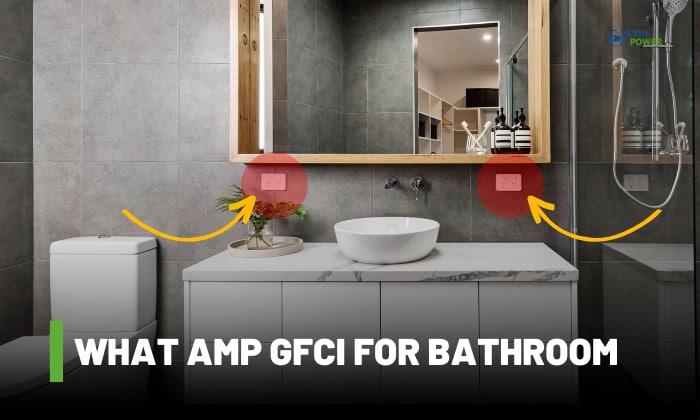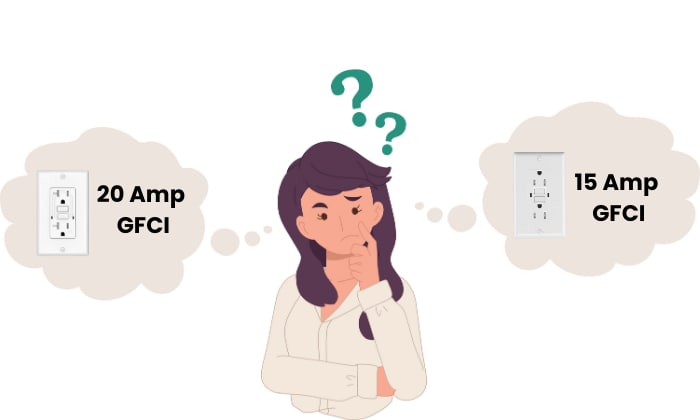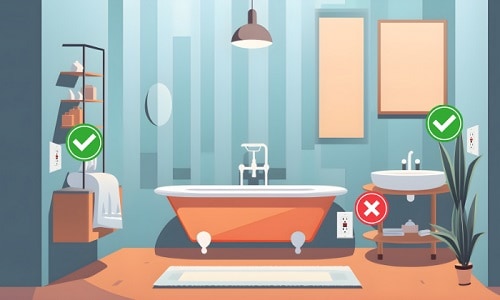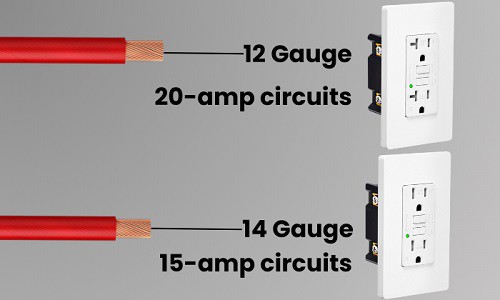Your bathroom serves as both a functional space and a place where electrical safety is paramount. Determining what amp GFCI for bathroom is a critical decision that ensures both safety and convenience.
Most professionals recommend a 20 amp GFCI circuit in a bathroom. In this article, we will explore why this is the best recommendation and consider various factors to keep in mind when establishing a circuit for your bathroom.
Table of Contents
What Amp GFCI You Need for Your Bathroom
When designing a bathroom circuit, several aspects must be considered. One of these is the installation of ground fault protection, commonly known as a GFCI outlet, which is required by electrical standard. Moreover, they also recommend that the GFCI outlet have at least a 20 amp in addition to the electrical code for bathroom outlets.
In this manner, your electrical equipment, such as hair dryers and electric curling irons, will have enough power to perform properly. Furthermore, it can keep the circuit from being overloaded, which can damage your equipment.
However, if you use these electrical devices with a 15-amp GFCI bathroom receptacle, the power may be insufficient, causing damage due to sudden turning off and on your device.
We are only allowed to utilize a 15 amp GFCI outlet, considering the bathroom is small enough and does not require the usage of various electrical gadgets.
Still not sure whether you need a 15 or 20 amp GFCI in bathroom? You may compute the overall amp draw of your bathroom devices by summing up the amp draw of all your bathroom devices. You can do this with the help of straightforward calculation using the formula \[ \frac{\text{Watts}}{\text{Volts}} = \text{Amps} \]
Here’s how to apply it to use.
- For example, if you have a 1000-watt hair dryer with a voltage rating of 120 volts, you can calculate its amp rating by dividing the wattage by the voltage, resulting in 8.3 amps.
- You can apply this formula to determine the amp ratings of other appliances as well.
Additionally, it’s essential to consider the 80% safety margin of the total electrical capacity of the circuit for safe operation.
As a result, if the total amperage of your electronic equipment exceeds 15 amps, a 15-amp GFCI outlet may not provide sufficient power for all your devices at the same time. Nonetheless, if you’re exclusively using the hair dryer without the simultaneous use of other devices, a 15-amp outlet should suffice.
Other Bathroom Outlet Requirements
1. Positioning of Outlets
Bathrooms are inherently wet environments, making them susceptible to electrical hazards. Therefore, the placement of GFCI outlets in your bathroom is critical for safety. However, they should be strategically positioned to cover all potential wet zones.
When positioning your outlet plugs in bathrooms, ensure that receptacles are located far enough from water sources such as around sinks, bathtubs, and showers. This will also prevent further potential ground faul accidents.
2. Wiring Rules
When it comes to wiring bathroom outlets, selecting the appropriate wire size is crucial to ensure both safety and functionality. The wire size you choose should be capable of handling the electrical load without overheating, thereby reducing the risk of electrical hazards.
- Generally, 12 gauge wire is suitable for 20-amp circuits, while 14-gauge wire is appropriate for 15-amp circuits.
- However, it is recommended to use 12-gauge wire for the size of bathroom outlets connection, especially if you have plans for upgrading your bathroom electrical connection.
This option ensures that your electrical connections are strong enough to accommodate future upgrades while still providing safe, dependable performance.
Conclusion
Understanding what amp GFCI for bathroom is crucial for safety and convenience. Whether you choose a 15-amp or a 20-amp GFCI, always verify compliance with NEC (National Electrical Code) standards for your bathroom outlets to ensure electrical safety. Also, keep in mind your individual demands and the electrical load in your bathroom.
Remember to verify your local building codes and regulations to ensure that your outlets for bathrooms meet safety standards. These codes frequently offer explicit standards for receptacle placement in bathrooms, and compliance is vital to avoid potential legal issues.

I am Edwin Jones, in charge of designing content for Galvinpower. I aspire to use my experiences in marketing to create reliable and necessary information to help our readers. It has been fun to work with Andrew and apply his incredible knowledge to our content.




